By Dan Weisz
American Kestrels are both good looking birds and fierce predators. They smallest falcon in the United States and we have American Kestrels in Tucson year-round. They are less common in the summer but they are very common wintering birds here. During migration times, their numbers also swell. I spent one afternoon on a farm west of Tucson at the beginning of April and the fields were swarming with Kestrels. Crickets were the main item on the menu that afternoon.
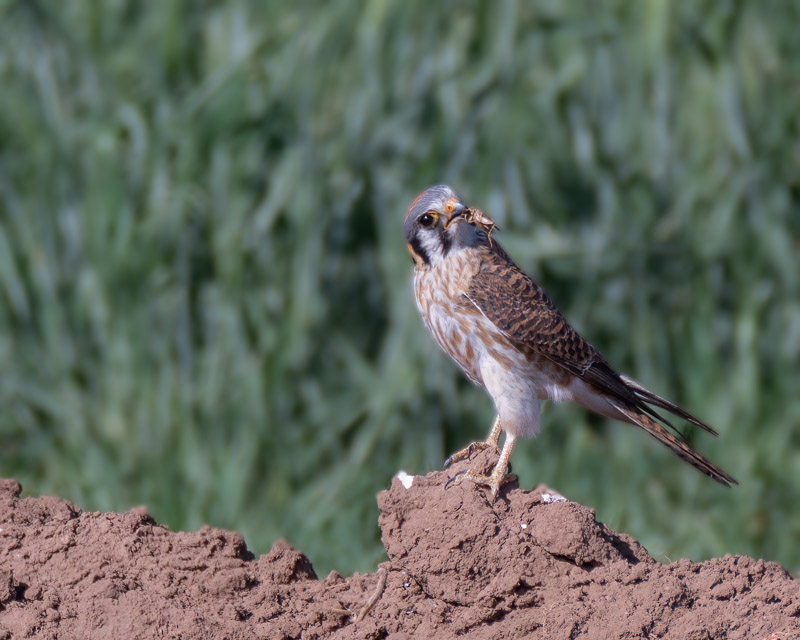
Female American Kestrels are rusty-brown on their wings and back. Their colors matched the color of the rich clay soil of the farm. Kestrels favor open country with perches to hunt from. At this farm, the highest lumps of clay alongside the farm field offered perfect perches, as evident by the extensive ‘whitewash’ on this bump of clay.
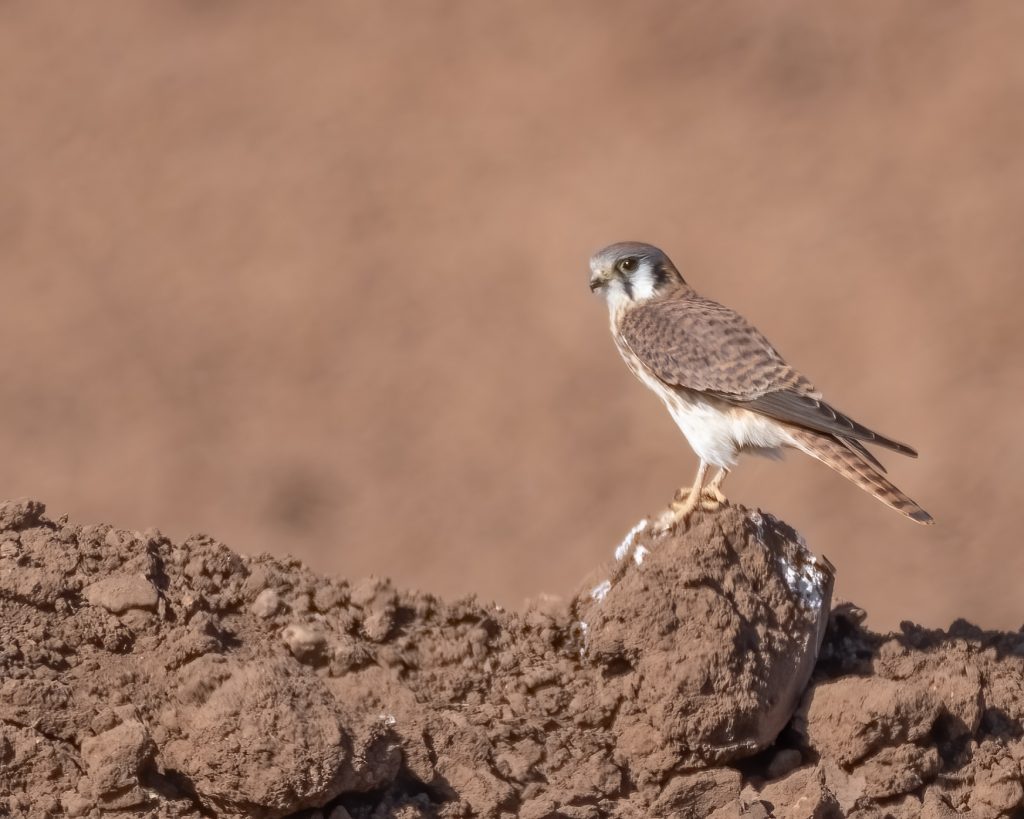
Another female American Kestrel on another ‘high’ perch alongside a field. Kestrels, both male and female, have two black slashes on their face, called mustaches or sideburns. The birds are about the size of the common Mourning Dove. https://www.birdnote.org/listen/shows/american-kestrel
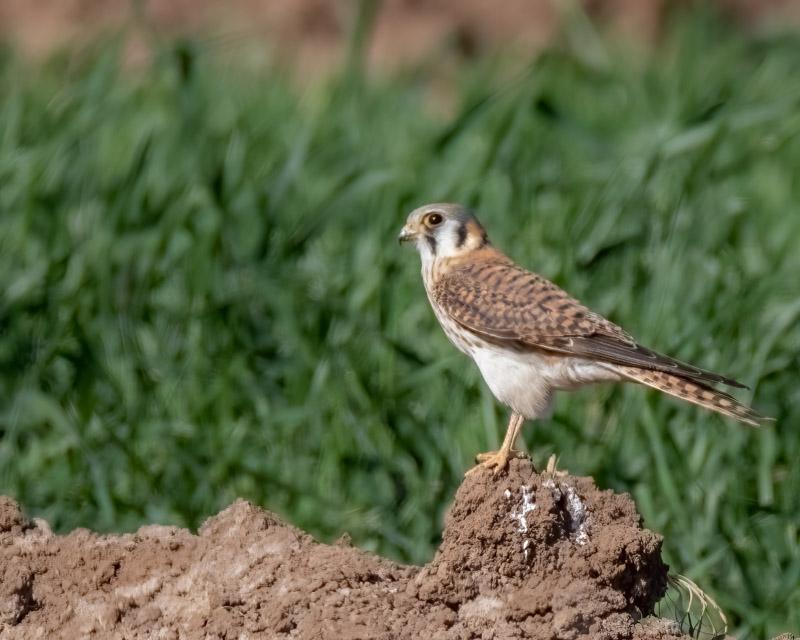
Here, a male American Kestrel perches on the top of an irrigation ditch handle. Contrasting with the female’s plumage, the male has slate blue wings and spots on its belly.
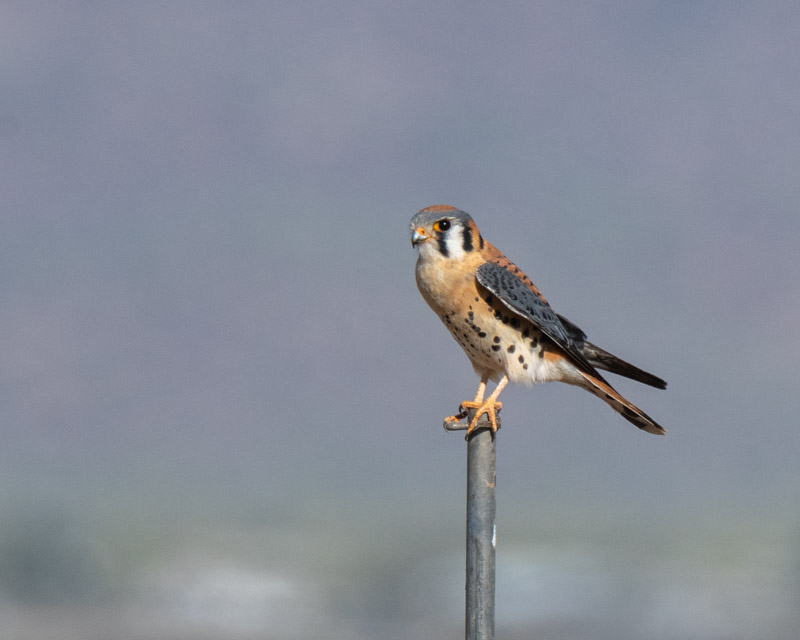
This gives you a sense of location. The female Kestrel, with brown streaking on her breast, sits alertly while searching for prey.
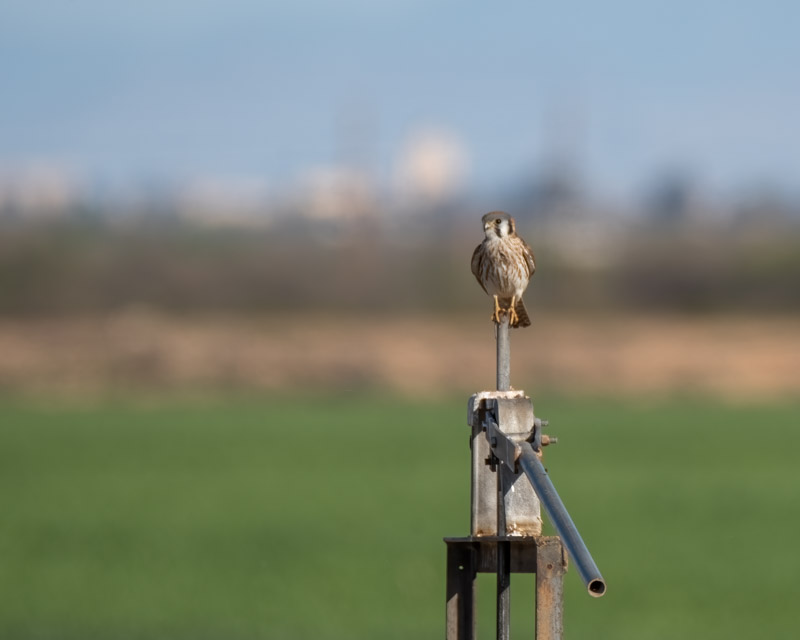
There were so many American Kestrels along every road at this farm. This must have been a large group migrating north with a stop at the farm to gorge on insects for the next leg of their trip. This male is holding the remains of a cricket he caught. He has just bitten off a piece and swallowed it. Note the Kestrel’s long, pointed wings and rusty tail.
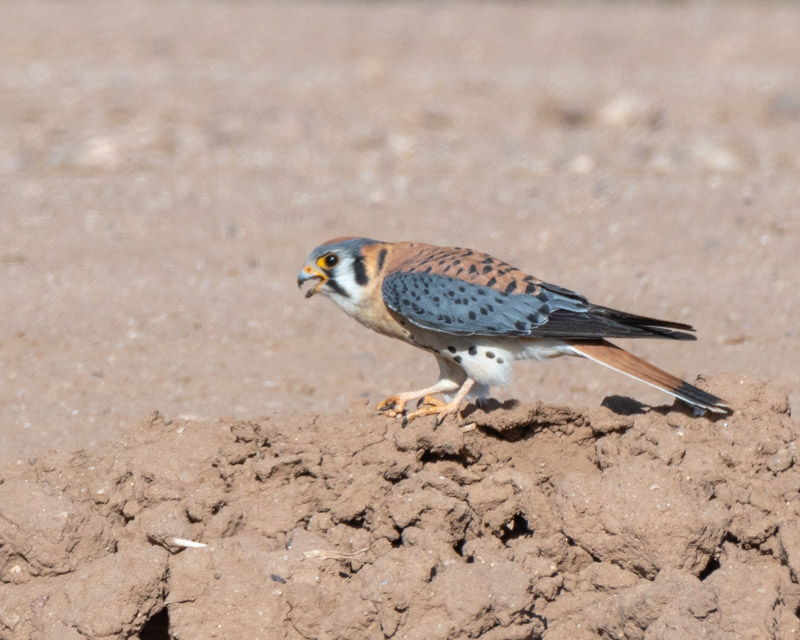
The Kestrels would fly occasionally but they never want far from their food source- the many, many crickets we could see roaming over the ground. This is a female Kestrel slowly flying across a field while keeping her eyes on the ground below.
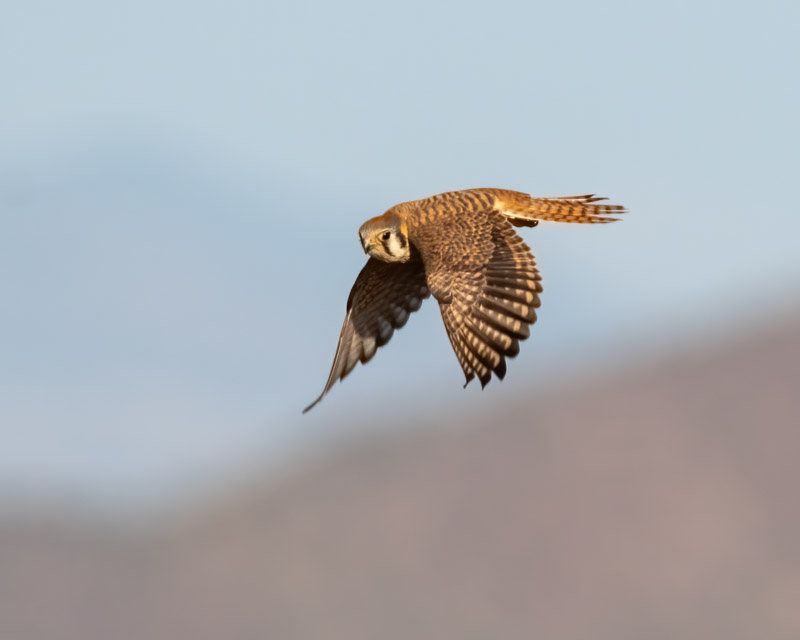
This Kestrel had been sitting on the ground. Some raptors let you know they are going airborne by some kind of sign- bending their body, stretching their wings, shifting their perch. Kestrels go from sitting still to airborne in a fraction of a second. This bird caught me by surprise when it took off. I clipped the wings in this shot but thought it was still an interesting shot. The sun was low in the western sky and the bird’s head is in the shadow created by its left wing. The black barring under this Kestrel’s tail lets us know this is a female as does the streaking on her breast.

Yum. For some reason, each Kestrel that caught a cricket began to eat it by biting off its head. Whether that was the tastiest part because crickets bite back, that seems to be the Kestrel’s eating pattern. Note the very thick white feathers on the Kestrel’s upper leg.
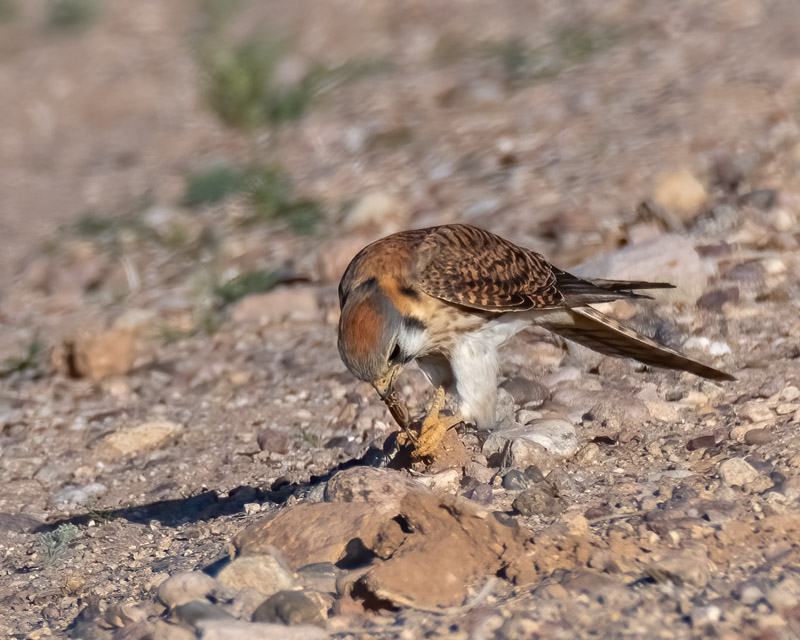
After dining on the cricket, the Kestrel was ready to take off again.
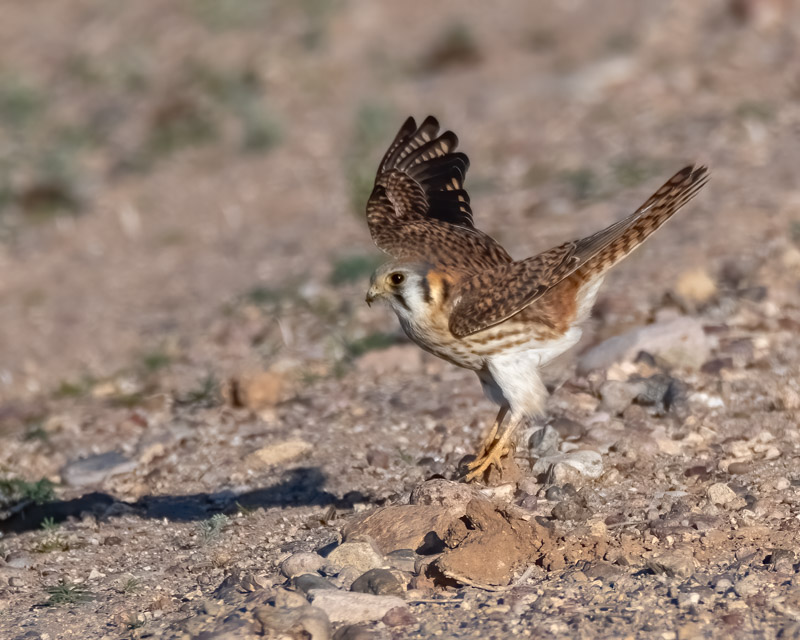
One of the many male Kestrels along the fields. Kestrels have blue-gray bills with a sharp, black tip. Their cere, the fleshy skin at the base of the bill, is yellow.
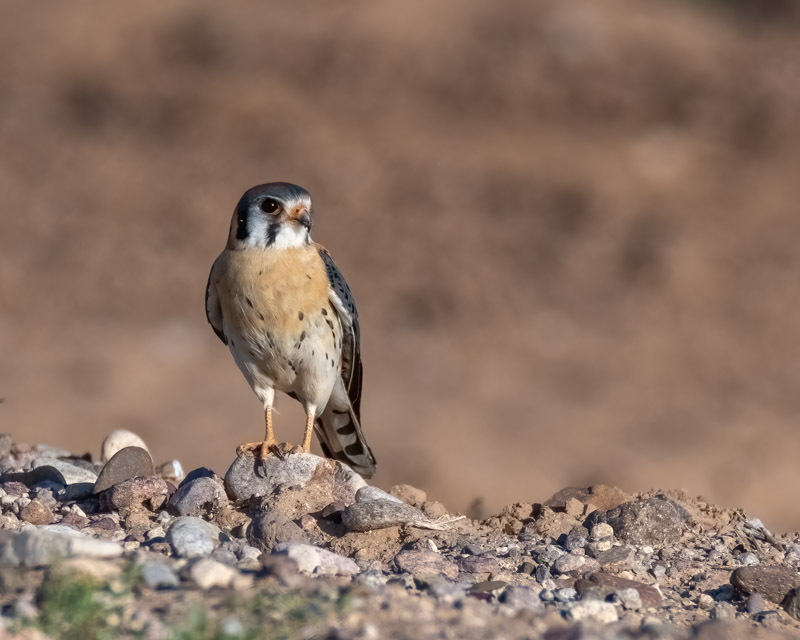
And yet another pretty female American Kestrel on a white-washed perch.
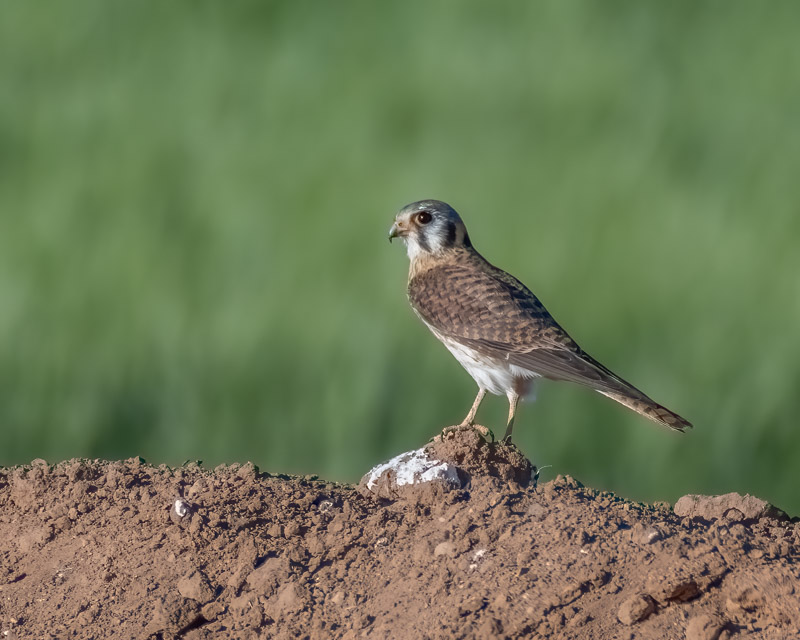
Over and over again, the Kestrels would find a cricket and eat it, wait a bit, and then take a short hopping flight to the next cricket. American Kestrels are very pretty birds and very efficient hunters.
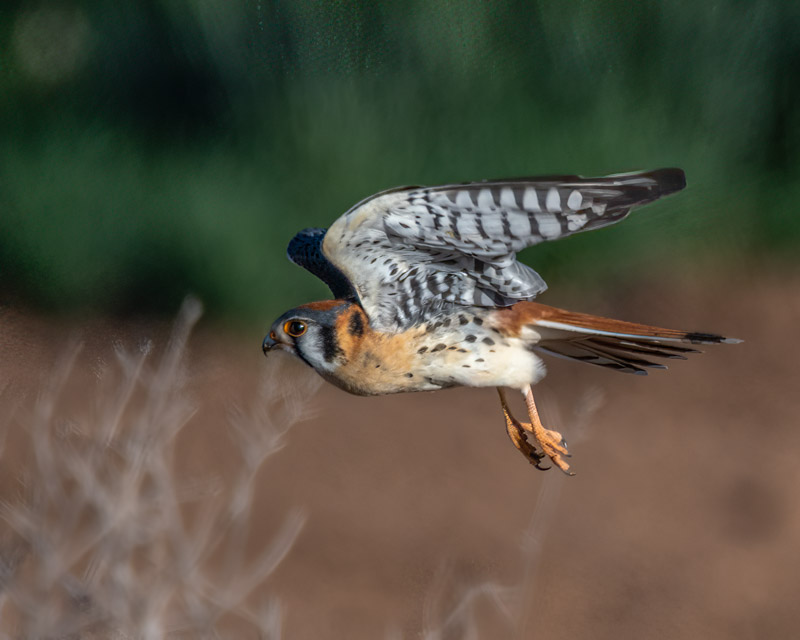
For more on American Kestrels, see the Peregrine Fund https://www.peregrinefund.org/explore-raptors-species/falcons/american-kestrel
